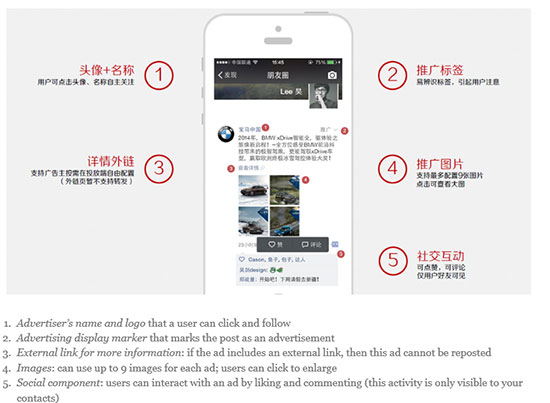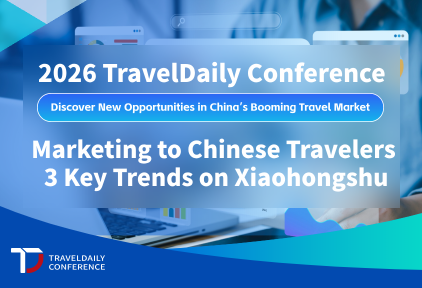Part – I of WeChat Special
ChinaTravelNews, Ritesh Gupta – The prowess of WeChat is on the rise, going by the way its monthly active user base is expanding. As a result, more and more travel brands are trying to understand the clamour behind the phenomenal rise of this app.
WeChat, which is also known as Weixin in China, has evolved tremendously from being a mere free messaging and calling offering. The app has improved its stickiness with the user via a gamut of features, something that is accentuated by the fact that monthly active user base of WeChat reached 549 million at the end of the first quarter, representing year-on-year growth of 39%.
In fact, brands today are keen on ascertaining how to be a part of this app’s “Moments” feature, where relevant content is shared between users.
WeChat offers options for businesses to communicate via service or subscription accounts (the accounts differ in terms of number of broadcast messages that can be done in a month, push notification feature, payment API support etc.). A major development over the past few months has been the introduction of in-feed advertising. But one needs to look beyond this in order to make a meaningful impact in the overall digital marketing mix, says George Cao, Co-founder/ CEO, Dragon Trail Interactive.
Connected world
As Cao points out, brands need to be proactive considering the way Tencent continues to reveal interesting features.
For instance, at this year’s Consumer Electronics Show (CES) in Las Vegas, the Chinese company tied up with Caesar’s LINQ Hotel & Casino for a “connected” suite in Las Vegas. One could scan a room-specific QR code, and the app users were able to connect to the suite and control various aspects of the room remotely through their handsets.
Irrespective of where a booking is coming from, hotels can own the experience in a much better way. Imagine being able to pre-program the “sleep” scenario on WeChat so that once selected, the room automatically switches off the lights!
Gaining prominence
Kate Chang, Regional Director, China, The Los Angeles Tourism & Convention Board, says it is being indicated that over 300 million active users that engage with the app. “It fits in the marketing mix, is even more popular than Weibo, and it has multiple features including video chat, voice calling, SMS, games, QR code scanning and much more.” She adds, “To me, it is more reliable, as it is on Friend’s “ Moments”.”
Chang says according to Tencent, WeChat has been developed as a “Swiss-Army” knife. “More and more features and functions have been introduced to make WeChat a key component of user’s daily life. So users’ activity has been recognized as a key strength for brand building.” She adds, “The functionality has been expanding, so it is not merely a media platform. It is a platform connecting active interaction between friends and industry. Beyond blog posting Moments, everything can be done through WeChat, e.g. to pay for taxi, searching for geo-location (Shake), etc.”
She added, “In terms of limitations, instead of a marketing platform, WeChat was designed to be a service platform, so only one article can be posted over a public account, so hard-push sales, and lucky-draw kind of campaign are not allowed for public accounts, but WeChat does encourage us to engage users with content.”
For LA Tourism, the team normally plans a WeChat content calendar on a monthly basis in conjunction with DragonTrail. This results in consistency, too. “ For example, our WeChat post on June 11 this year, ‘14 reasons for visiting LA by Instagram’ got 27236 views which ranked No. 3 among all destinations on the Weekly Ranking for WeChat Content Posts.”
Understanding different layers
Talking of what the app is all about, Cao says, “Firstly, it helps to understand the full scope of what WeChat offers and the new dimensions it adds to the user experience. First and foremost, there is a communication layer for person to person interaction in this app. Then there is a social layer, termed as Moments, where one can share updates akin to what audience today is used to doing on Facebook timeline. Then there is a media layer, where content generation happens or publishing via subscription accounts. Now in order to reach out to a wider audience, brands need to find ways to touch the Moments section for users to share and interact with a brand, because 85% of media consumption happens on this layer,” explained Cao.
Cao added that finally there is a connectivity layer. “As the company’s tagline says “Connect All”, this layer, consisting of a rich set of API’s, connects people to people, people to organizations, hardware to software, etc. This has the most potential, and brands aren’t really capitalizing on the true potential of this layer at this juncture. They need to be more open-minded and creative.”
Meeting objectives
As for ads, US-based Chris Breikss, president, Sheng Li Digital and 6S Marketing, says Tencent has diligently worked on aspects like how and when to show ads in users’ newsfeeds.

Source: Sheng Li Digital
Even as performance-based social advertising is emerging as an option, marketers need to strengthen their efforts in gaining valuable customer data by leveraging new features offered by WeChat, asserts Cao. Referring to the connectivity layer of WeChat, Cao recommended that the app should be used to engage every guest that visits the hotel, using iBeacon and related technologies combined with incentives or promotions. This way hotels can effectively turn offline guests, where they have a distinct advantage in reach, into their digital ecosystem. And when vital data is garnered and connectivity is established, hotels should build on it and aim at conversation at the next digital touchpoint.
There are options to interact and post content in various formats (voice, video, photo and text). When Eric Michael Garcetti, the Mayor of Los Angeles, visited China last year, WeChat was used as a tool to interact with people via live questions that were broadcast on the app.
Referring to a campaign, Change mentioned the tourism board has been working with China’s biggest video show online video platform, Youku, to create a series of digital movie posters named as ‘Travel with Movie’. One of the most famous Chinese singers, known as musical poet Li Jian, was invited to be the anchor for movie shows. He visited more than 20 iconic scenic spots, restaurants, theme parks and museums in LA, covering over 100 classic movies shot in LA. YouKu shared the series in periodic order. “Our social media accounts, specifically WeChat, also released a series of posts facilitating the video promotion by creating additional video distribution channels, and introducing more in-depth of LA as a destination for movies. This acts as a complement to video content and has been very well distributed in a collective way to get more exposure and attention,” shared Chang.
Further, brands are strengthening customer support via WeChat. For instance, China Southern has been running its customer service via WeChat. Travellers, who follow the airline’s account on the app and end up integrating their loyalty programme details, gain flight-related self service options. There is also an option to interact with a representative by raising a query, be it for baggage, FFP account etc. Companies can also make use of HTML5 to drive audience to a desired URL and plan an action according to the objective of the campaign. Marketers are also making use of QR Code and Shake features to make the most of O2O marketing.
A user can utilize TenPay for transactions. Users have to sync a real-world bank account to add credit and conduct transaction via WeChat.
It should be noted that Tencent has been cautious about monetizing via ads. If not interested, one can deactivate ads by clicking the ‘Not Interested’ button on each ad. Companies should avoid such resistance anyway. As, Breikss says, it is vital to understand that brands need to offer relevant content and it shouldn’t be intrusive. Also, assess CPM pricing across impressions, clicks on external link, links, and comments etc. and encourage clicks and interactions for improving upon engagement.
(Part 2 of the WeChat Special series would focus on how to use the app as a platform for booking.)




